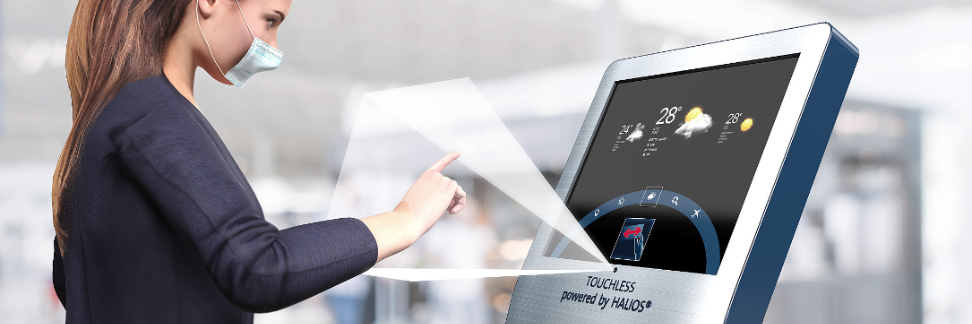Contact
If you have any questions, don't hesitate to contact us

Touchless control with Gesture Sensor Interface ICs
High recognition rate - even through distraction by ambient light, temperature, aging
The infrared-based HALIOS® gesture IC provides the highest sensitivity and robustness in detecting fast swipe movements for enhanced non-contact control. The solution is immune against ambient light enabling robust sensor design.
Elmos: HALIOS® Differential Measurement | Competitor: Absolute Measurement |
|---|---|
| + High sensitivity even with high optical cross talk + Very high robustness against flickering light and high ambient light + Reduced software support due to easy implementation of calibrations procedures | + Good sensitivity without cover – Needs high resolution of the PD signal – Needs good temperature drift and offset compensation – Needs additional component for integration |
Simple System1D Touchless control
|
Performance System2D Touchless control
|
High End System3D Touchless control
|
 |
 |
 |
On/Off and dimming control
|
Robust On/Off and dimming control
|
Gesture Control
|
The transmittance of the sensor cover should be at least 80% at 940nm. The thickness of the cover should be less than 3 mm and the air gap between sensor and cover less than 2 mm.
A spot sensor can also be operated with the covers that do not meet the minimum requirements, but a reduction in sensor range must be expected.
The usual pollution such as fingerprints are automatically calibrated out and have no influence on the functionality of the sensor.
The average current consumption of one spot sensor with three LEDs and 4ms sampling rate is 50mA.
The current consumption can be reduced by using the auto mode of E909.23.
In Auto mode, E909.23 manages the measurement and detection of the object itself. The system main controller is woken up by an interrupt and can be set to sleep mode in the absence of the object to be recognized.
Yes, power consumption can also be reduced by lowering the sampling rate. The E909.23 is able to switch between "gesture mode" with a high sampling rate for fast movements and "wait mode" with a low sampling rate for lowest power consumption.
If you have any questions, don't hesitate to contact us